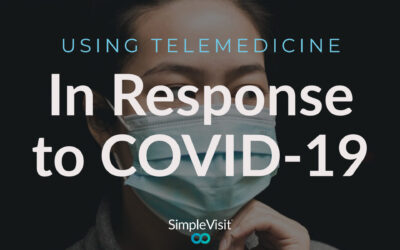
The Road to Reimbursement: Licensing
Over 70% of health systems signaled support of implementing telehealth services during a 2017 survey by the Center for Connected Medicine and The Health Management Academy. This same survey found, however, that only 10% of total health care was actively utilizing telehealth technology. The main reason for the lack of telehealth services: reimbursement. A supermajority of the executives surveyed referenced “reimbursement from government and commercial payers remains the greatest barrier to telehealth adoption.”
In this series, we will provide snapshots of common barriers to telemedicine reimbursement along with best practices to address each.

The first roadblock in the series is licensing. The official policy of your respective licensing boards supersedes any state laws and regulations including telemedicine. And to qualify for reimbursement, you must first must be licensed to provide care.
Licensed to care both here and there
One of the features that makes telehealth so attractive and useful is the ability to treat anyone who needs care no matter where you are in relation to where they are. It opens up a world of possibilities as far as the people you can help and the lives you can change – which is why most of you decided on a career in medicine in the first place. If only it were that easy. In most cases, licensing boards have policies governing the use of telemedicine. Each type of license for each state will have their policies posted/included in their licensing documents, which can be found on their individual websites. The Federation of State Medical Boards also has a wonderful resource of a 50-state review of telehealth policies in each state for Medical licenses. If you haven’t seen it yet, see it now – it is available in our Resource Library.
Cross-State Compacts
On top of the presence of telehealth policies for each individual license and state, traditionally you are required to be licensed to practice in the state where you reside and see patients. This has never been a problem before, but with telehealth, that can be two different places. This presents a unique problem. In an effort to solve this problem, some medical board associations for a select number of medical degree/license types are developing cross-state compacts that allow a provider to practice in any of the states who have passed legislation allowing their state to be a part of that compact. Currently there are four compacts active in the country, with at least two more in the works.
The provider types covered by the active compacts include:
- Interstate Medical Licensure Compact (Physicians)
- PT Compact (Physical Therapists)
- eNLC (Registered Nurses)
- REPLICA (Emergency Medicine Technicians)
Licensing boards for nurse practitioners and licensed psychologists are working on interstate compacts, but as of yet they do not have enough states to officially enact them and “go live”. The Psychology Interjurisdictional Compact (PSYPACT) needs seven states – which it has, but the law that the last state enacted, Illinois, does not make the compact effective until 2020. The Advanced Practice Registered Nurses (APRN) Compact needs ten states and as of this year only has three. For links to more information on these compacts, see the Policy section in our Resource Library.
Policy for the future
There are two other points worthy of note on this subject. The first is that, while the Federation of State Medical Boards was the organization that ended up supplying the model language for the ILMC, which has become the basis for all following compacts, the American Telemedicine Association, along with various entities from Telehealth Resource Centers across the country, all actively contributed into crafting this process. The ATA and the TRCs, your regional resource center plus the National Compendium and Policy Centers, are your biggest allies in getting more states to adopt these licensing compacts. Now that we have the technology to serve anyone anywhere, it would be helpful if the licensing standards and legislation can catch up.
That brings us to our second point, which is one of hope. The Veterans Administration’s recently enacted Anywhere-to-Anywhere rule and VETS Act law that allows providers within the VA health care system to bypass the cross-state licensing restrictions and deliver care to our Veterans wherever they are. While it would be wonderful if the rest of our healthcare system followed suit (as I’m sure they will one day), what population is more deserving of eliminating the red tape to health care delivery than those who have fought for our freedom? And as an entirely government-run health care system, the hope is that other commercial systems and government entities will see this bold move and decide to be the next to take the brave and compassionate step of falling in line with the VA.
Please check out our Resource Library for answers to questions on policy and more – and if you can’t find the answer, drop us a line or shoot us an email and we would be happy to help! Keep a lookout for the next article in our series, the “Road to Reimbursement: Location”
Industry Leaders Push for Permanency for Telehealth Coverage Expansions
Allie Clark | 8 min read | June 8, 2020During the COVID-19 pandemic, telehealth has been necessary for not only the health of all American citizens, but also that of healthcare companies of all sizes. Virtually delivered services have kept many medical offices open...
Allie Clark | 10 min read | March 6, 2020[Updated on November 20, 2020] Our world is in the throes of what is undeniably one of the most severe infectious disease outbreaks in modern history. Coming up with innovative approaches to stem the spread of the infection of...
20/20 Vision: Presidential Panorama
Allie Clark | 6 min read | February 10, 2020[Updated March 10, 2020]As we continue on into 2020, more opportunities for growth and advancement of virtual care delivery abound. This year also brings the single biggest event that happens in our country: a presidential...



